What does DeviceN mean for prepress customers?
1. Host-based separation workflow
In the past separations were mainly produced as host-based separations. Host-based separations are generated by applications such as QuarkXPress, and HELIOS PDF HandShake. Generating host-based separations means that one composite page is converted to a set of grayscale pages, one such page for each used separation color. These separation colors are usually Cyan, Magenta, Yellow and Black plus optional spot colors (usually selected from Pantone, HKS or similar color systems). Films and plates have been produced for many years using the simple and well-known method of host-based separations.
The advantage of a host-based separation is that it works with any PostScript RIP in the market including any PostScript laser printer.
The disadvantage is that once print jobs are separated (i.e. composite input pages are split into a set of grayscale output pages) they cannot be printed composite anymore. But composite printing is needed for proofing on color printers.
2. Composite printing on color printers
Printing on color printers is usually done sending composite print jobs to the printer which consist mainly of CMYK data. Data encoded in other color spaces such as RGB and CIE Lab is converted to CMYK by the PostScript RIP.
The advantage of composite printing is that every single page includes all colors. This works with many PostScript compatible color printers.
The disadvantage of composite CMYK output is that many special features such as spot-colors, overprint black, knockouts, and duotones cannot be reproduced adequately by a color printer, some of these features are approximated, some are fully omitted. One group of problematic features is exact reproduction of spot colors, e.g. duotones with spot colors. Color printers approximate spot colors by using a mixture of CMYK colors instead, usually defined by the printing application. Overprints, black overprints in particular, are normally completely lost when printed on a color printer. So a composite color printer will produce different / wrong results compared with printing separations used for typesetting films and plate output.
Documents with spot colors can only be reproduced and viewed adequately when printed on a device with separate physical output channels for all used spot colors. This means that all CMYK or RGB based devices cannot reproduce documents with spot colors adequately. This applies to almost every color printer like Best Color RIP, EFI RIPs, HELIOS PrintPreview in composite only mode, HP PostScript compatible devices, it even applies to the screen view of PDF documents with spot colors generated by Adobe Acrobat. You will get only a rough composite approximation of spot colors on CMYK and RGB devices.
3. DeviceN color spaces
PostScript 3 and PDF 1.3 introduced the DeviceN color space which allows arbitrary combinations of color channels for composite printing. Such color channel combinations include the widely known Pantone® Hexachrome™ six channel color system, or CMYK plus two spot colors, or Black plus one spot color. Without the DeviceN color space, images with such channel combinations cannot be represented in composite PostScript and PDF, they can be approximated with CMYK colors only. DeviceN color spaces can be used both for composite printing and for in-RIP separations.
The advantage of DeviceN color spaces is that many more color combinations with spot colors can be expressed for composite printing, they come into full play when printed on a device with separate physical color channels.
There are two disadvantages of DeviceN. The first problem is that many devices in use do not yet support PostScript 3 with DeviceN. Printing jobs with DeviceN color spaces on these devices will result in PostScript errors. The second problem is DeviceN color spaces are used frequently to express spot colors, and no CMYK based printer, not even a proof printer, can reproduce spot colors adequately.
4. Composite printing with in-RIP separation workflow
Modern prepress applications like Adobe InDesign or PDF HandShake do support composite output for in-RIP separations already. In-RIP separation on an in-RIP capable device yields the same output as a host-based separation, at least when spot colors are not used. If spot colors are used, they can only be preserved with in-RIP separation when your applications support both in-RIP separation and DeviceN output. Additionally, you need a PostScript device which supports both in-RIP separation and DeviceN, i.e. PostScript 3. Also, the PostScript device must be capable of generating separate physical color channels from the DeviceN data, which means that DeviceN spot colors are not converted back to CMYK.
HELIOS ImageServer 2.5 (with all updates installed) replaces images with OPI comments and produces DeviceN PostScript output whenever needed to preserve spot color information. This applies in particular to DCS-2, TIFF and Photoshop images with additional spot colors and colorized grayscale images.
The advantage of in-RIP separations is that they can be used on in-RIP capable devices to generate separations on the one hand, and are technically still composite jobs on the other hand. Thus they can be converted by Adobe Distiller to composite PDF documents without losing any color information and they can be printed on a proof printer.
The disadvantage of in-RIP separations is that many devices in use do not support PostScript 3 in-RIP separations with the DeviceN feature.
5. Overcoming QuarkXPress limitations with HELIOS ImageServer 2.5 and PDF HandShake 2.1
You can use HELIOS ImageServer now to overcome some QuarkXPress limitations. QuarkXPress 3 through 5 cannot produce DeviceN output, and QuarkXPress 3 through 6 cannot produce in-RIP separations. But if you use QuarkXPress in connection with HELIOS ImageServer, you can produce in-RIP separations with DeviceN output. Here is how you can do it:
Print your print jobs from QuarkXPress to an EtherShare PDF HandShake Create PDF queue using the OPI image replacement of ImageServer 2.5 to create PDF documents using Adobe Acrobat Distiller (automated via Create PDF Server).
These PDF documents still include full composite DeviceN spot color information, generated from the hires DCS-2, TIFF and Photoshop images with spot colors, as well as from colorized grayscale images. You can print these PDF documents via PDF HandShake with its variety of options including host-based and in-RIP separation to your PostScript 3 compatible imagesetter or similar output device.
6. DeviceN proofing with HELIOS PrintPreview 2.0
You can obtain a correct proof using PrintPreview using host-based separations:
- Create a PDF 1.3 (or higher) file from your composite PostScript job resolved by HELIOS ImageServer 2.5 (easily done via Create PDF Server) – Print a host-based separation of the PDF file using PDF HandShake (via Acrobat plug-in, Hot Folder, “pdfprint” tool or PDF Internet Printing) into a PrintPreview queue
PrintPreview will recombine the separations into a color matched composite approximation preview plus the set of grayscale separations for all needed colors. These separations include all information including correct overprinting and knockouting, correct spot colors derived from DeviceN PostScript, and exisiting trapping and color information. If you approve the results, you can generate the final output:
- Print the PDF document with in-RIP separations using PDF HandShake to your final output device

 Enterprise Server
Enterprise Server
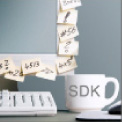 Développeurs / SDK
Développeurs / SDK
 Industrie / Commerce
Industrie / Commerce
 Editeurs de journaux / Maisons d'édition
Editeurs de journaux / Maisons d'édition
 Photographes / Studios
Photographes / Studios
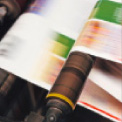 Agences de communication / publicité
Agences de communication / publicité
 Vidéo & Divertissement
Vidéo & Divertissement
 Collaboration depuis le cloud
Collaboration depuis le cloud
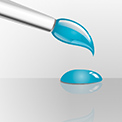 Couleur HD
Couleur HD
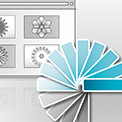 Traitements d'images
Traitements d'images
 L'épreuvage
L'épreuvage
 Connectivité WebShare
Connectivité WebShare
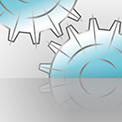 Automatisation de flux
Automatisation de flux
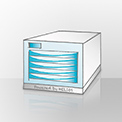 Serveur de fichiers pour l'entreprise
Serveur de fichiers pour l'entreprise
 Communiqués de Presse
Communiqués de Presse Vidéos
Vidéos  Bulletins
Bulletins  Événements
Événements